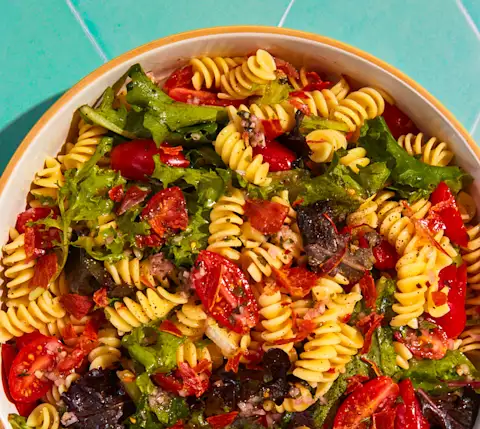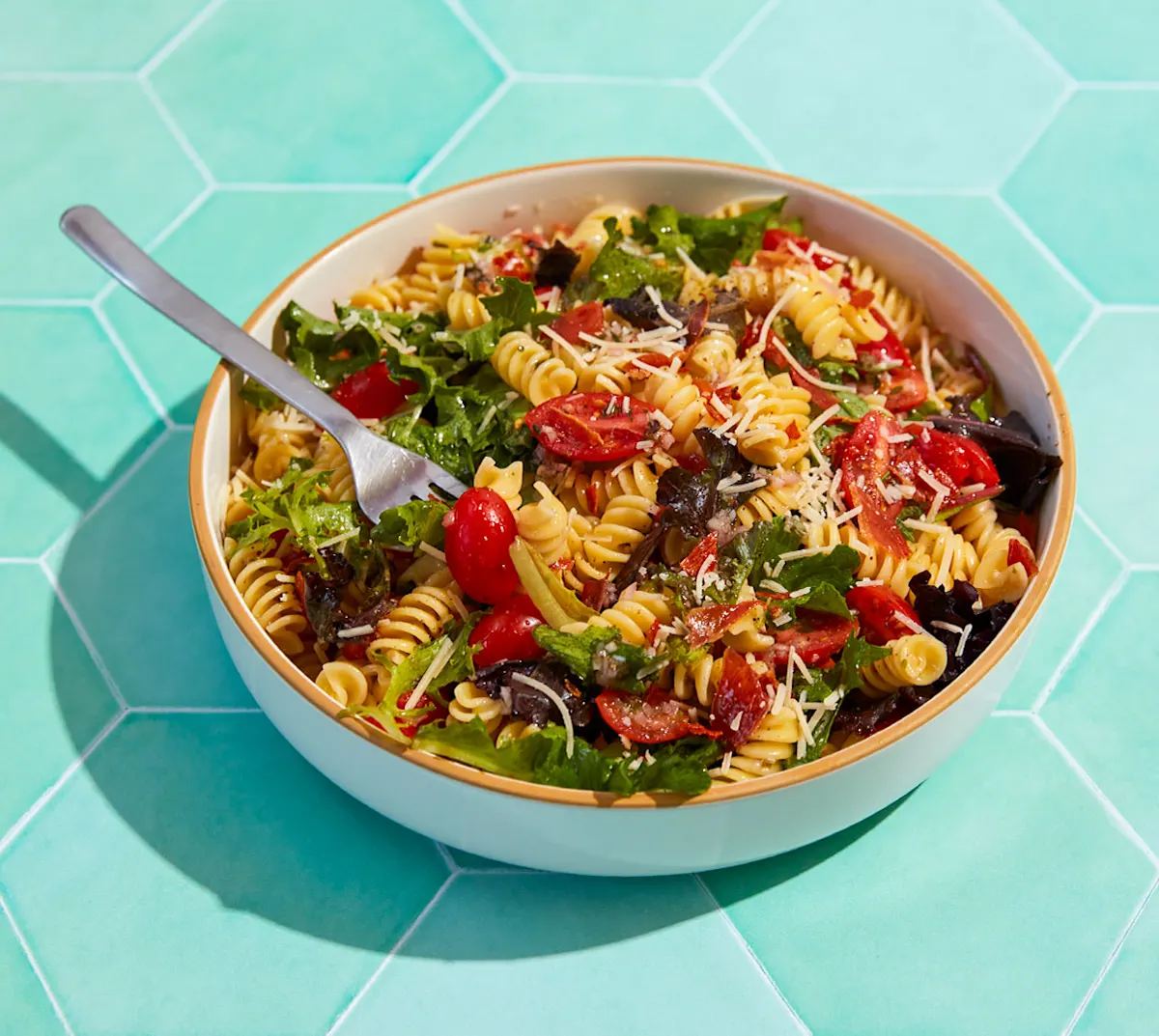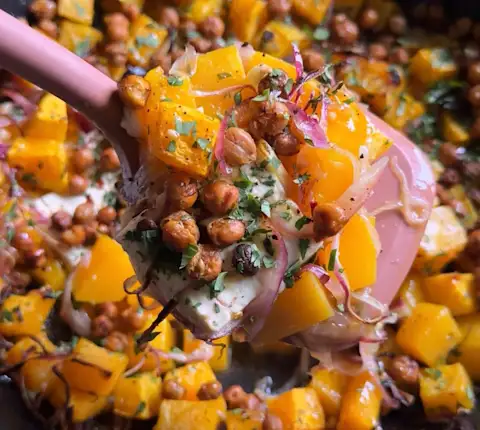I’m not a fan of pasta salads. They often taste of bottled Italian dressing, which I associate with buffets at awkward office parties and dinners at roadside chain restaurants during a road trip. Pasta sitting in dressing loses its toothsome chew and softens to the point that a serving spoon can cut right through it.
Salad pasta is a warm bowl of freshly boiled pasta into which a salad has parachuted in. It is a dinner you prepare fresh and à la minute for yourself and those you love.
So no pasta salad for me, please. Salad pasta, on the other hand, is glorious stuff. The simple difference is everything. Salad pasta is a warm bowl of freshly boiled pasta into which a salad has parachuted in. It isn’t something that you entomb in Tupperware to bring to a potluck at the annual meeting of your homeowner’s association. It is a dinner you prepare fresh and à la minute for yourself and those you love.
I ate a lot of salad pasta when I worked in a restaurant that had a wonderful house dressing made with olive oil, balsamic vinegar, a ton of herbs, and a not insignificant amount of minced garlic and shallot. Management was pretty chill about letting the cooks eat anything they wanted off the menu. I could have helped myself to veal scaloppine or lobster gratin, but what I usually craved was one of those green salads poured over a bowlful of steaming hot linguine. A little parm, a little ground pepper… It was such a refresher after a long shift.
Now that I just cook for my family, salad pasta is a pretty regular quick meal.
When tomatoes are in season, I’ll make a variation of tomato salad pasta without even thinking. I start with about a pound of coarsely chopped tomatoes, a hefty pinch of salt, some minced shallots and/or garlic, and a teaspoon or two of sherry or red wine vinegar in the bottom of a mixing bowl. Letting this all macerate for 10 to 15 minutes levels up the finished product immeasurably. Luckily, that’s just about how long it takes for a half pound of pasta to cook.

During this time I can scrounge for add-ins. Some crumbled feta, cucumbers, and dried oregano can take it a Greek direction, while gochujang, sesame oil, and scallions lean toward Korea. Also: Is there a bell pepper that needs using, or an ear of cooked corn left over from last night’s dinner? Why not invite them to the party?
When the pasta (spaghetti or penne) is ready, I’ll take stock of the tomato situation. If there’s a lot of juice pooling in the bowl, I’ll add the pasta directly to the bowl. If not, I may add a half ladle of cooking water first. I stir it well while adding two or three tablespoons of olive oil and seasoning it generously with salt and black pepper. A handful of mesclun greens would be welcome at this point. If there’s an inch-long chunk left on a log of goat cheese to crumble, or a hunk of parm to shave with a vegetable peeler, they’d provide a nice finishing touch.
During the winter, when tomatoes can’t take the starring role, greens in a tangy dressing do the job nicely. I’ll macerate chopped shallots and garlic in balsamic or rice wine vinegar, along with some dried herbs like oregano and basil. I’ll also add the olive oil now (say 1/3 cup for two tablespoons of vinegar), season it with salt and pepper and balance the flavors while the pasta cooks. If I’m using winter greens like romaine, escarole, or radicchio, then I might add a splash of honey to the dressing to play up the bittersweet flavors. Nuts find a home in this salad pasta, and with a fried egg or some torn prosciutto on top, it’s dinner in 15 minutes flat.
Shop GroceryPHOTO CREDIT:
Photographer: Paul Quitoriano
Stylist: Mary Rupp
Art Direction: Sarah Ceniceros





